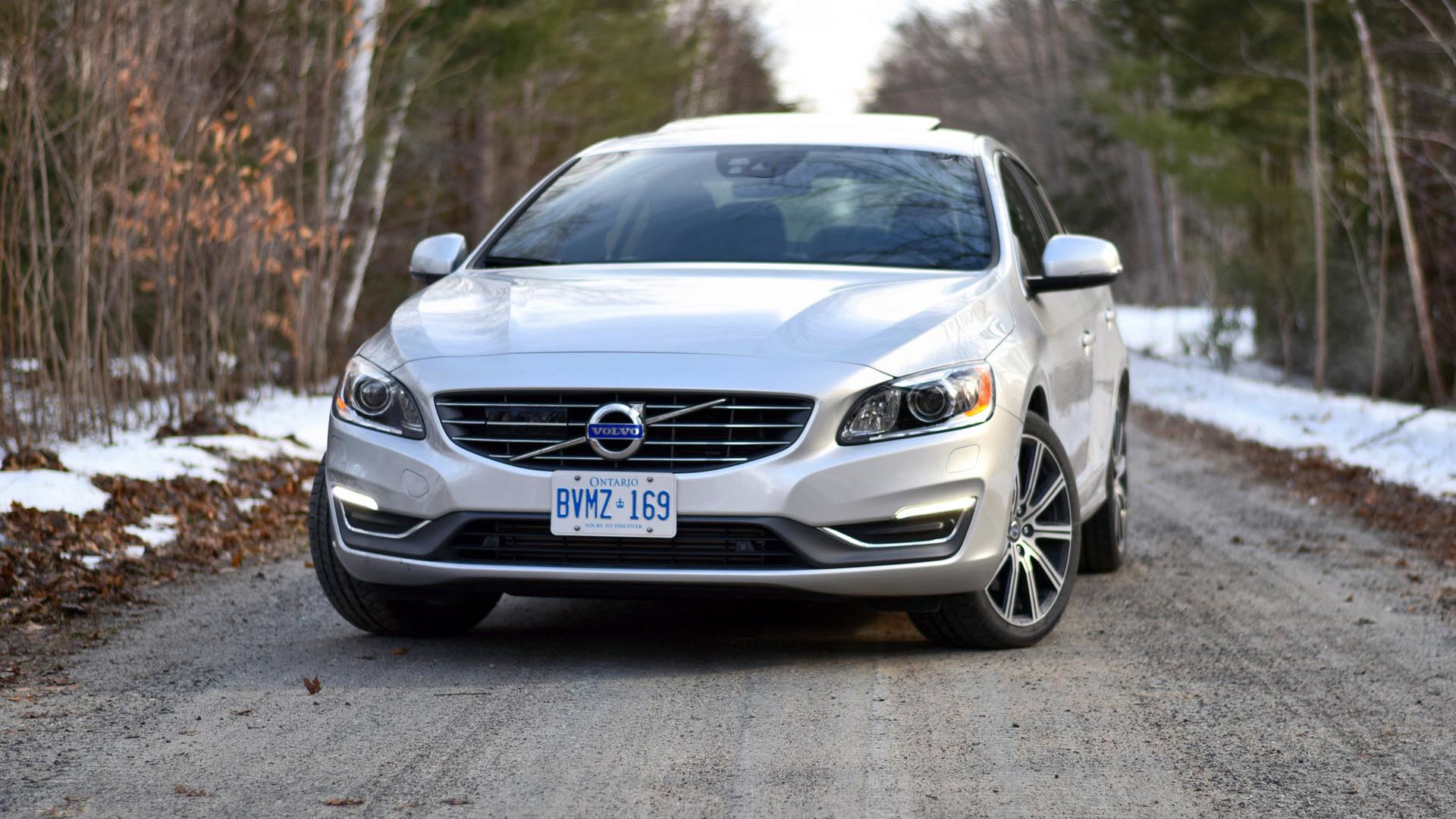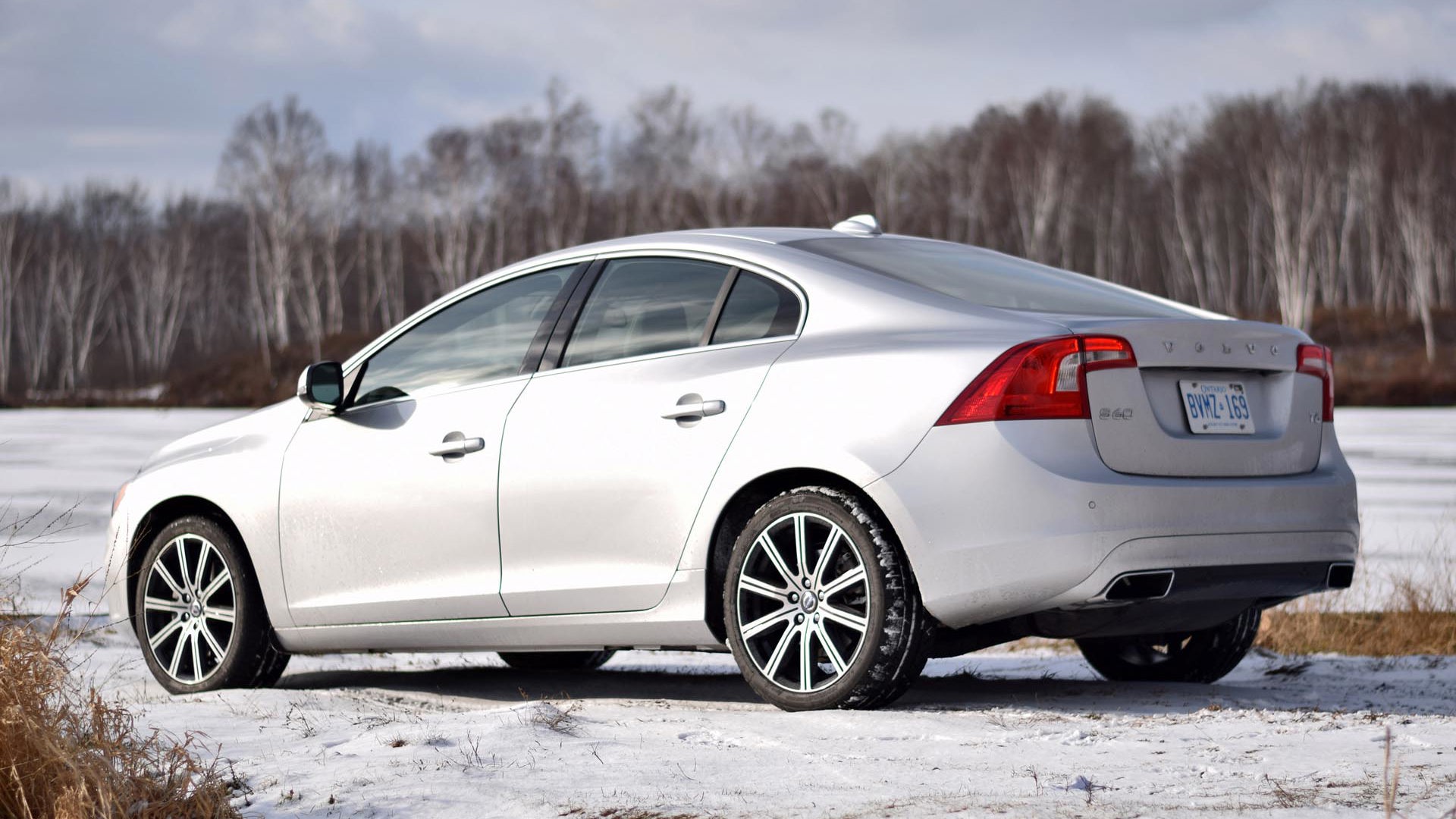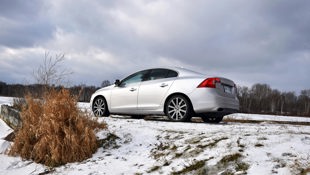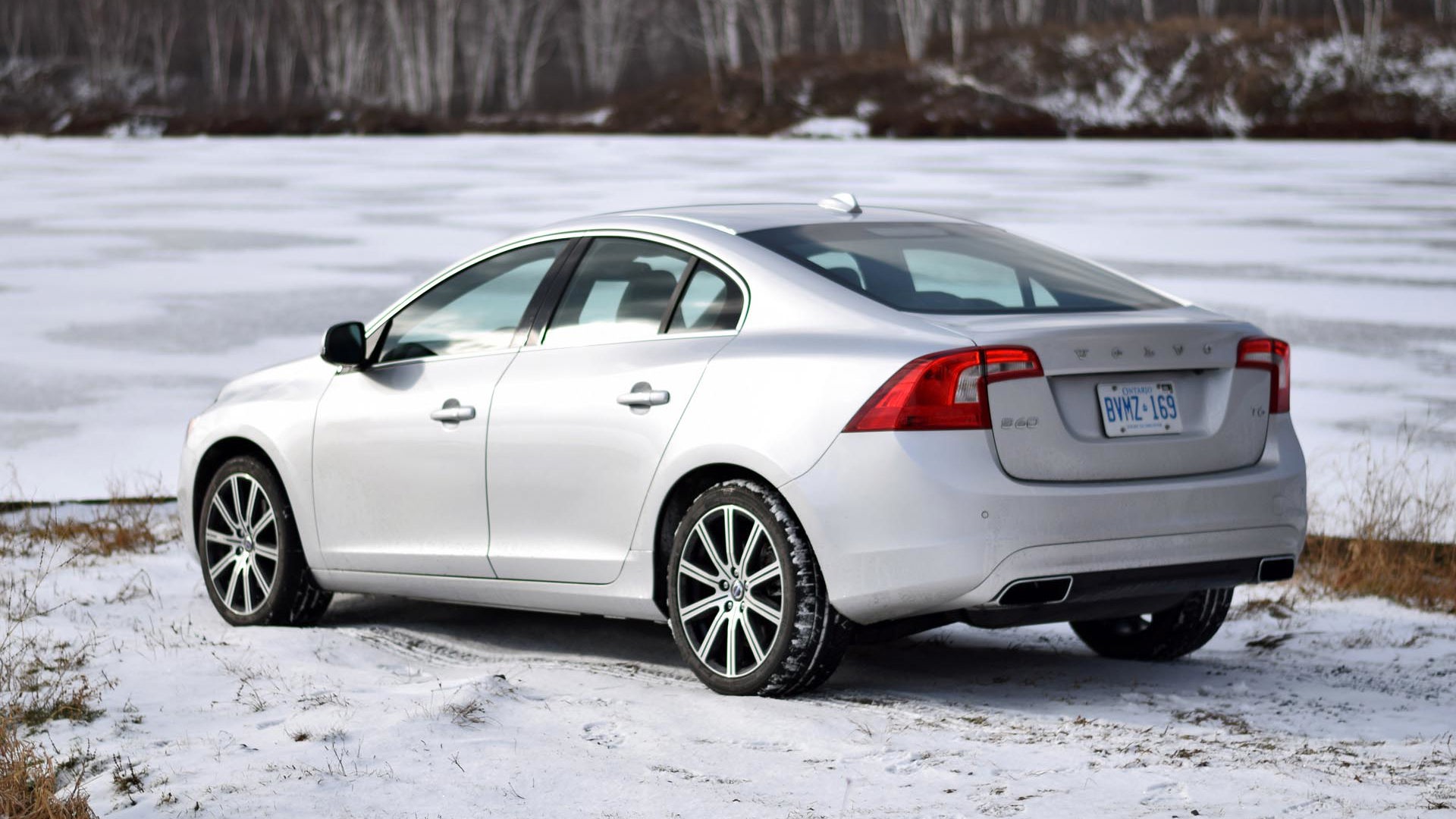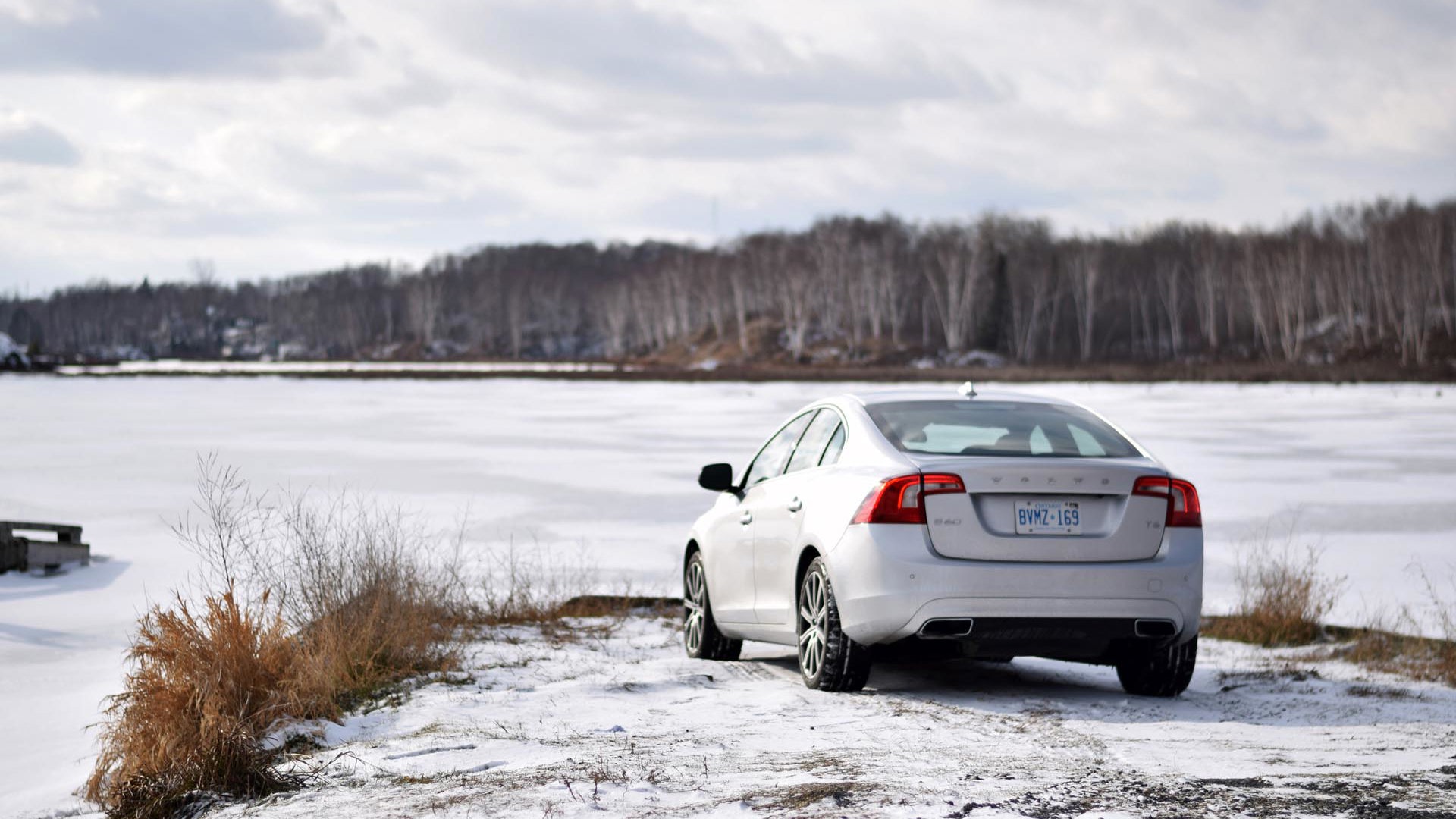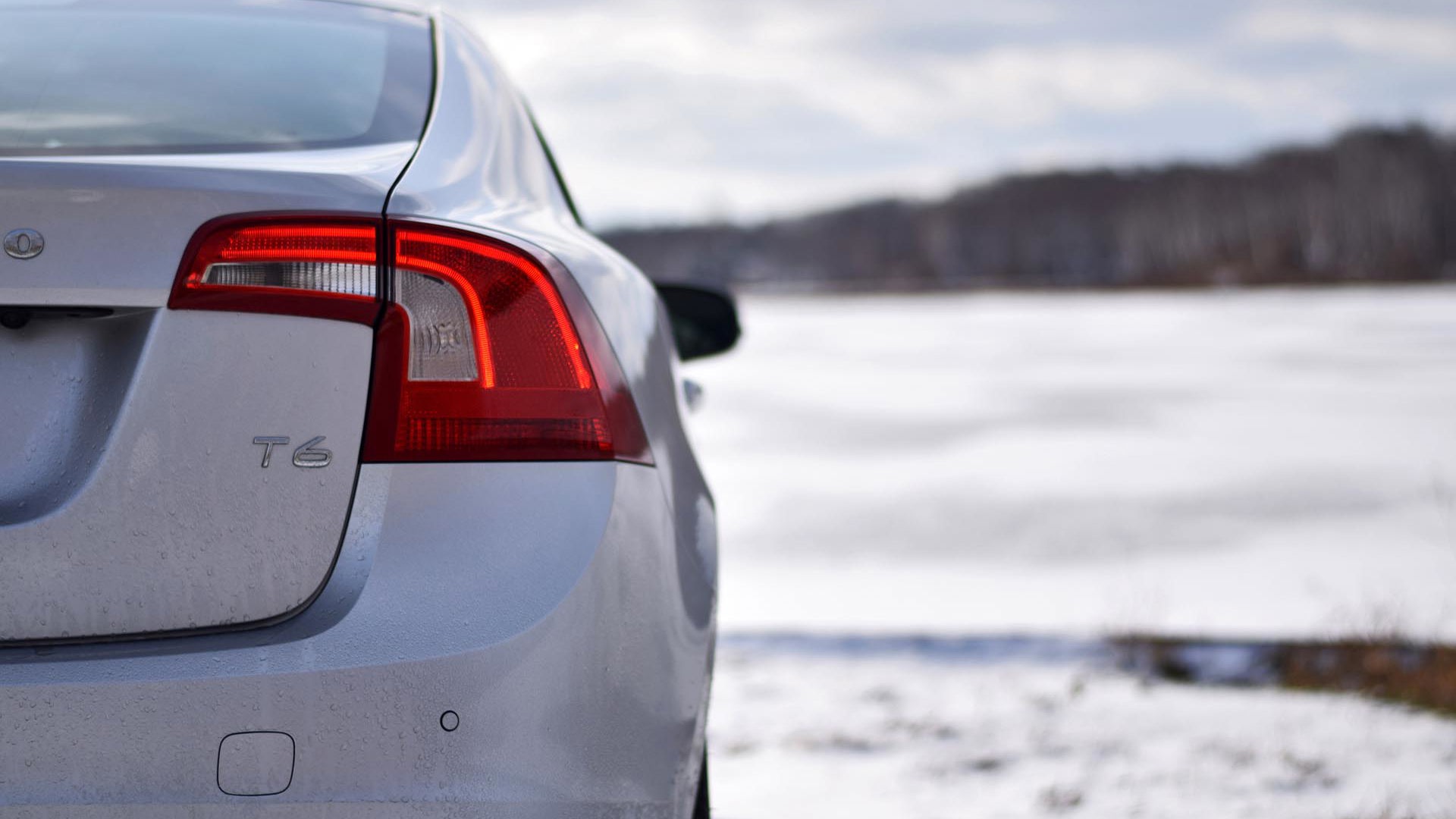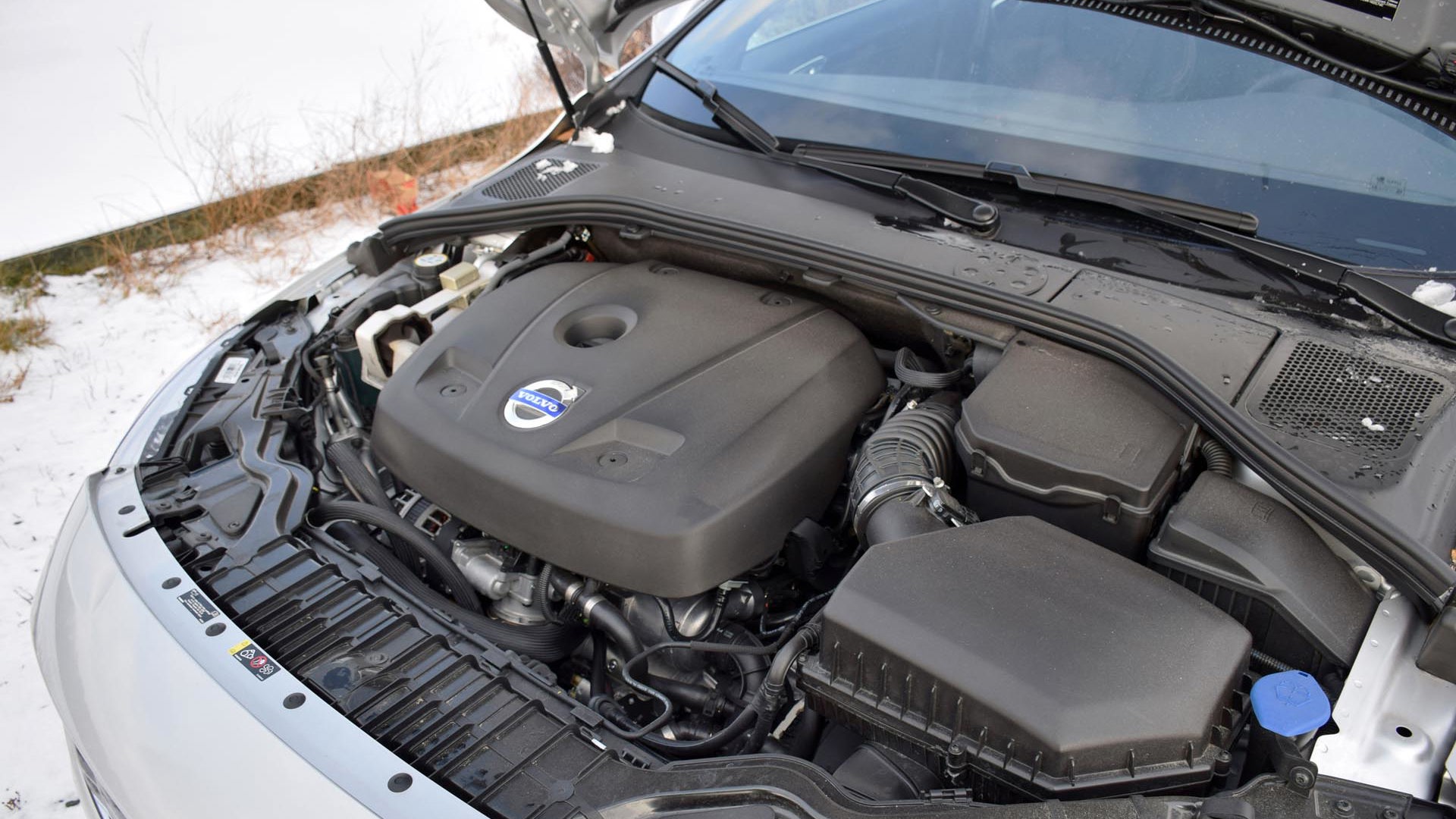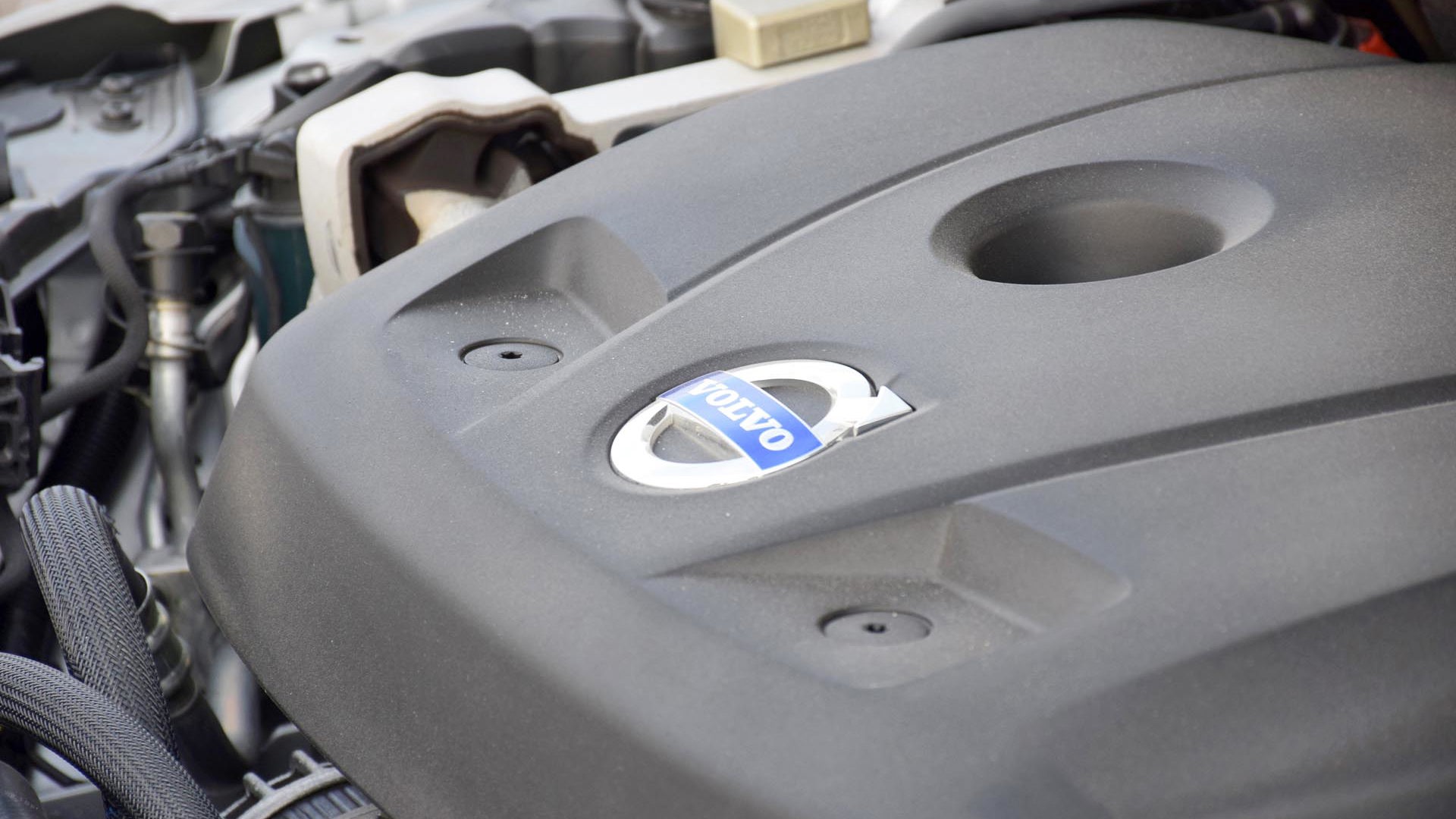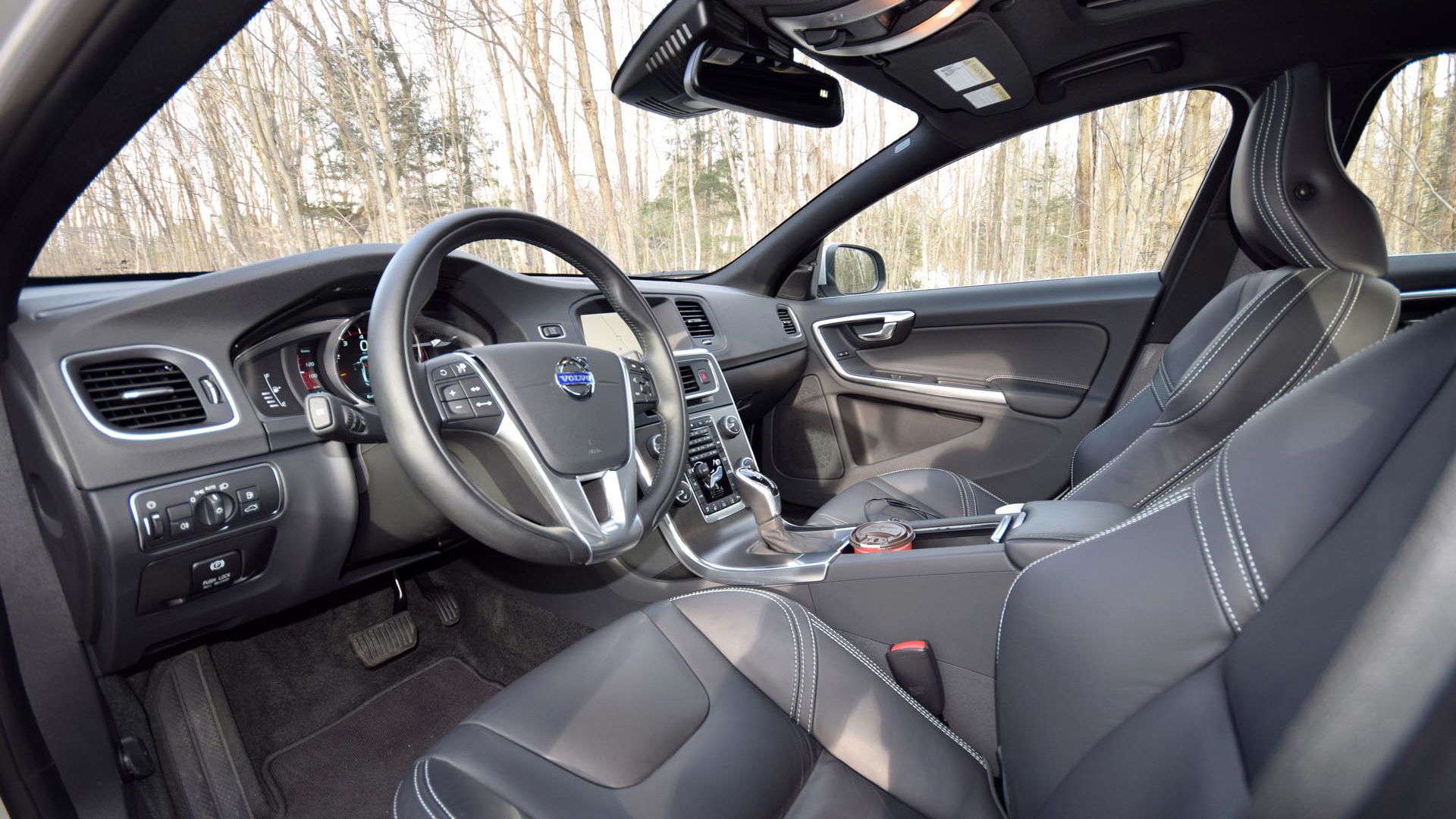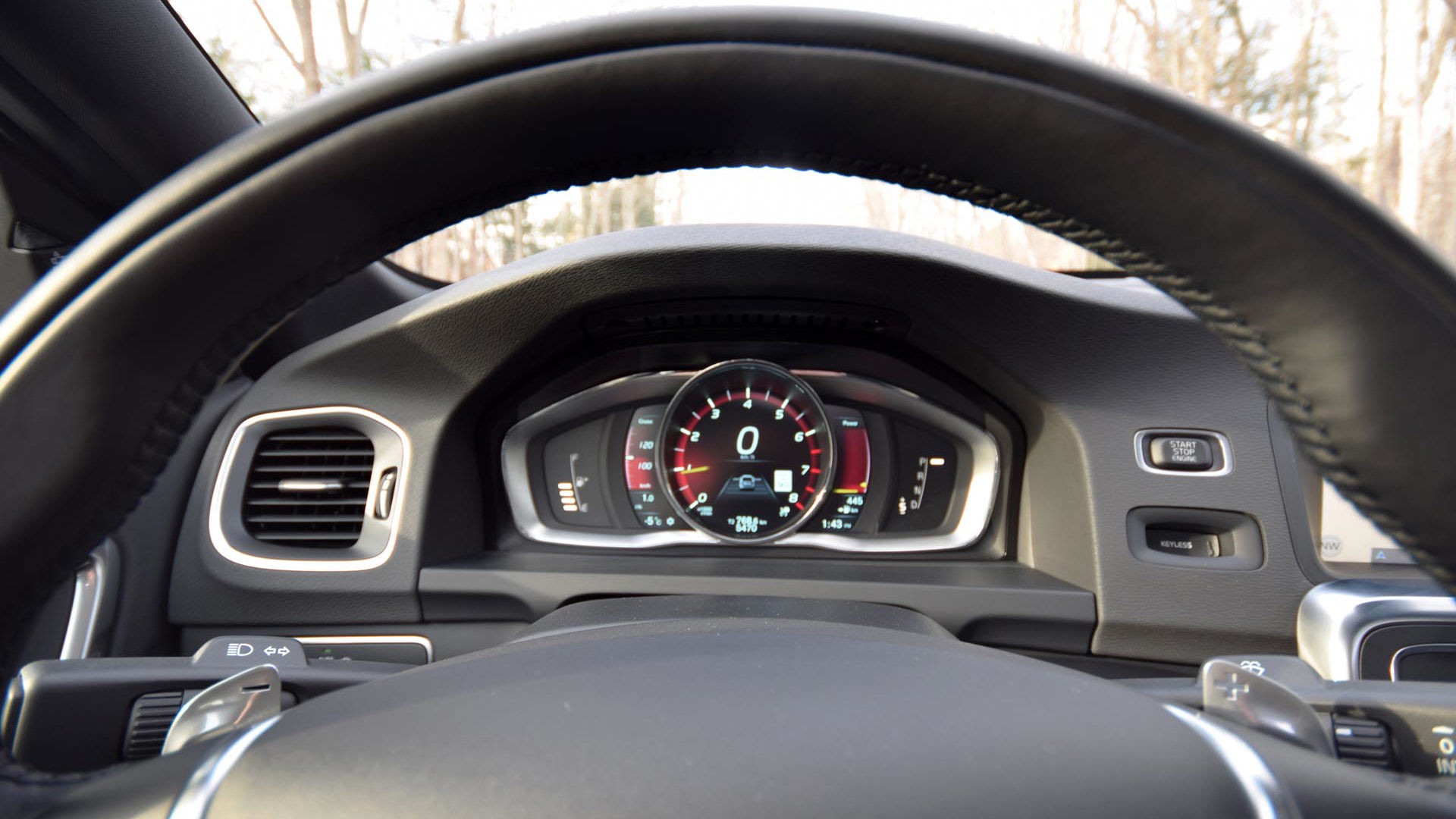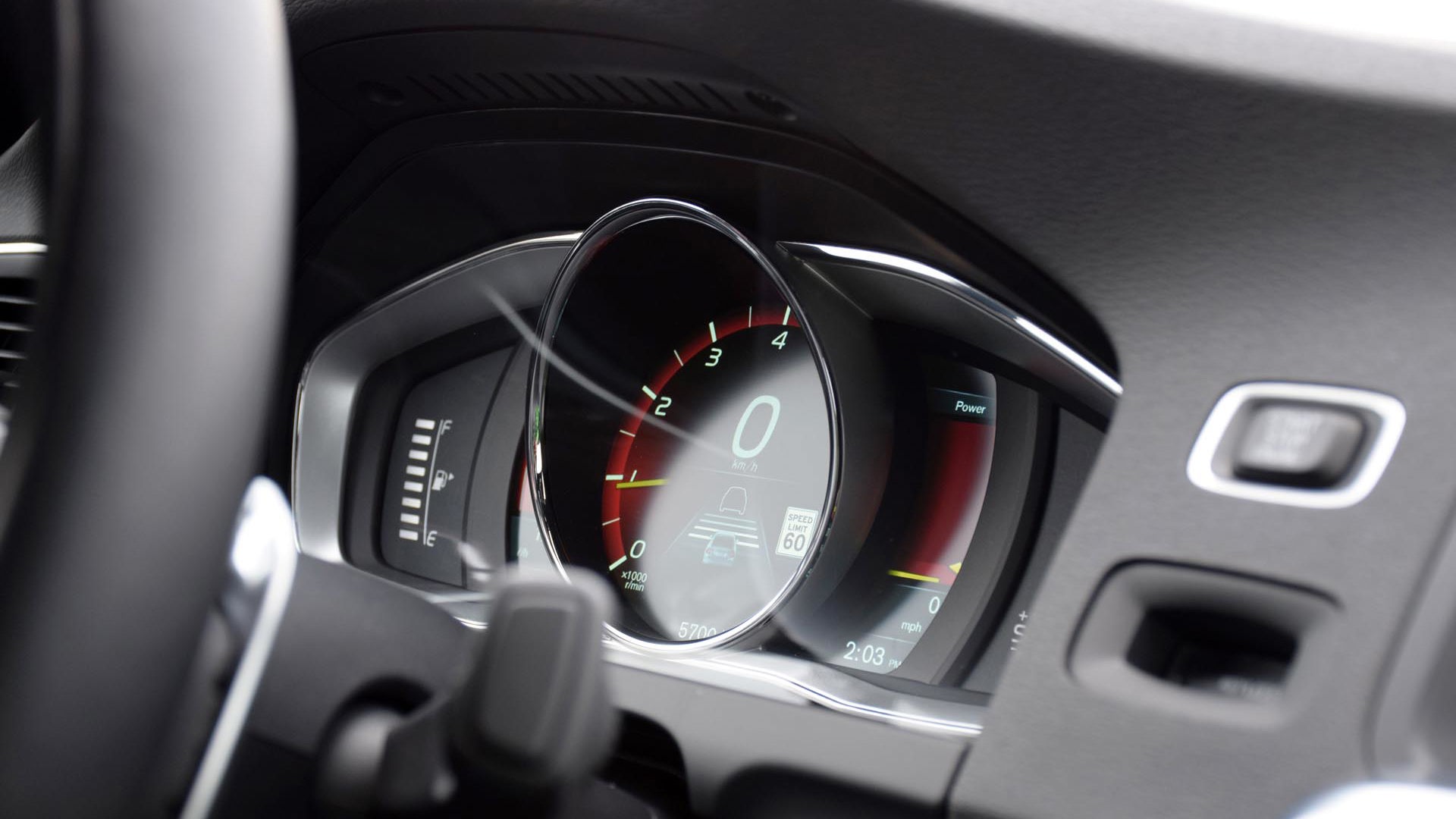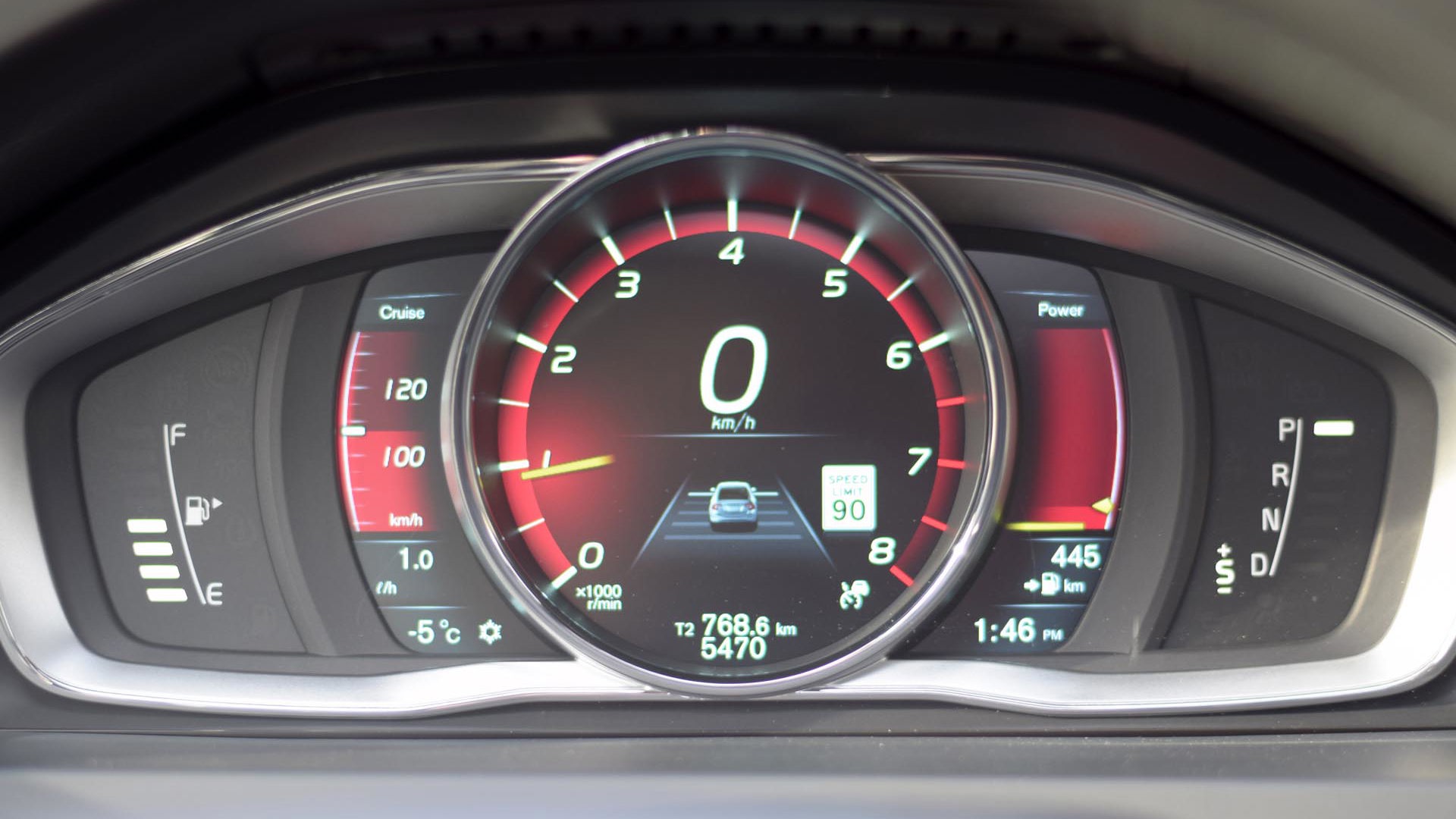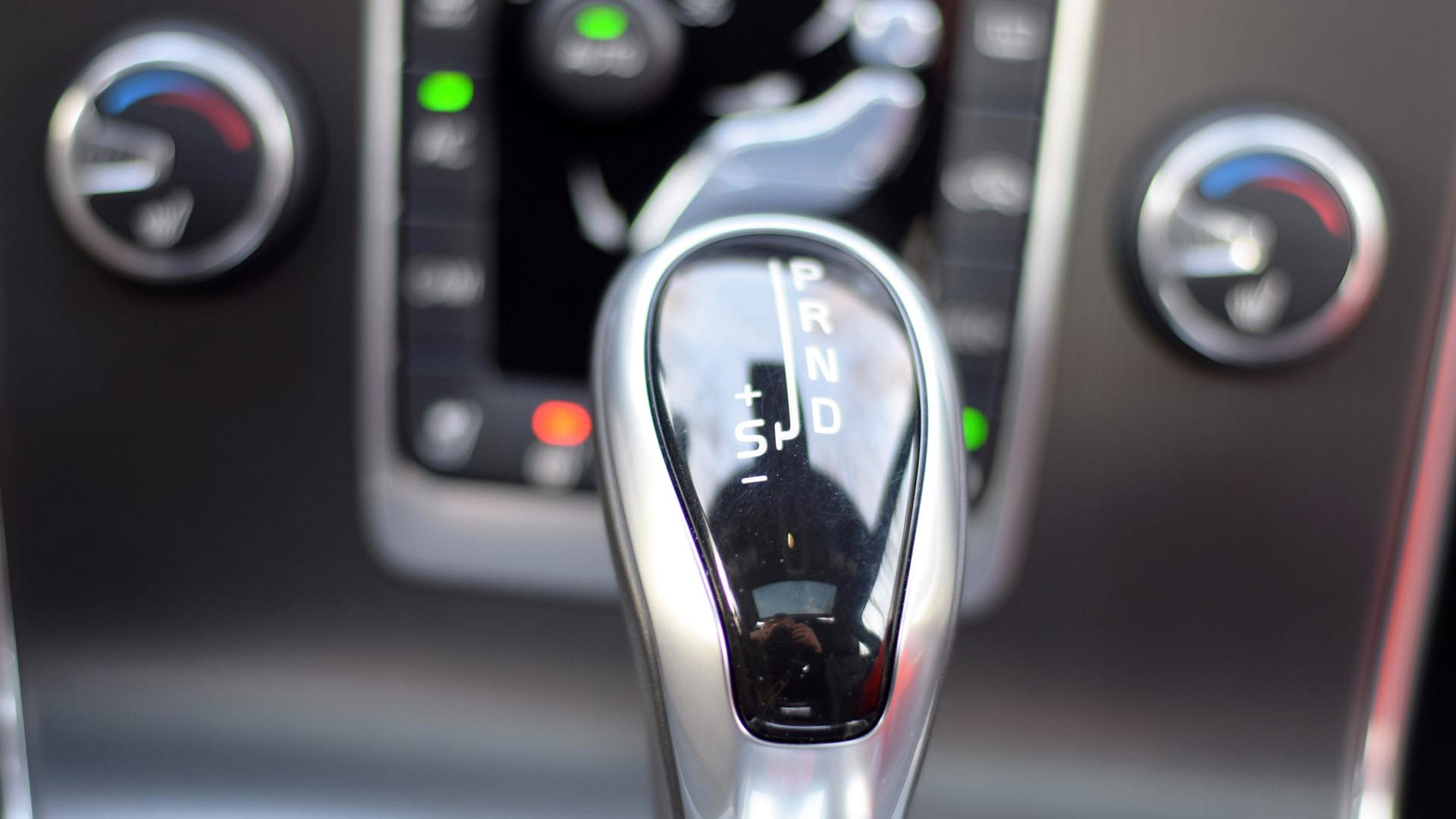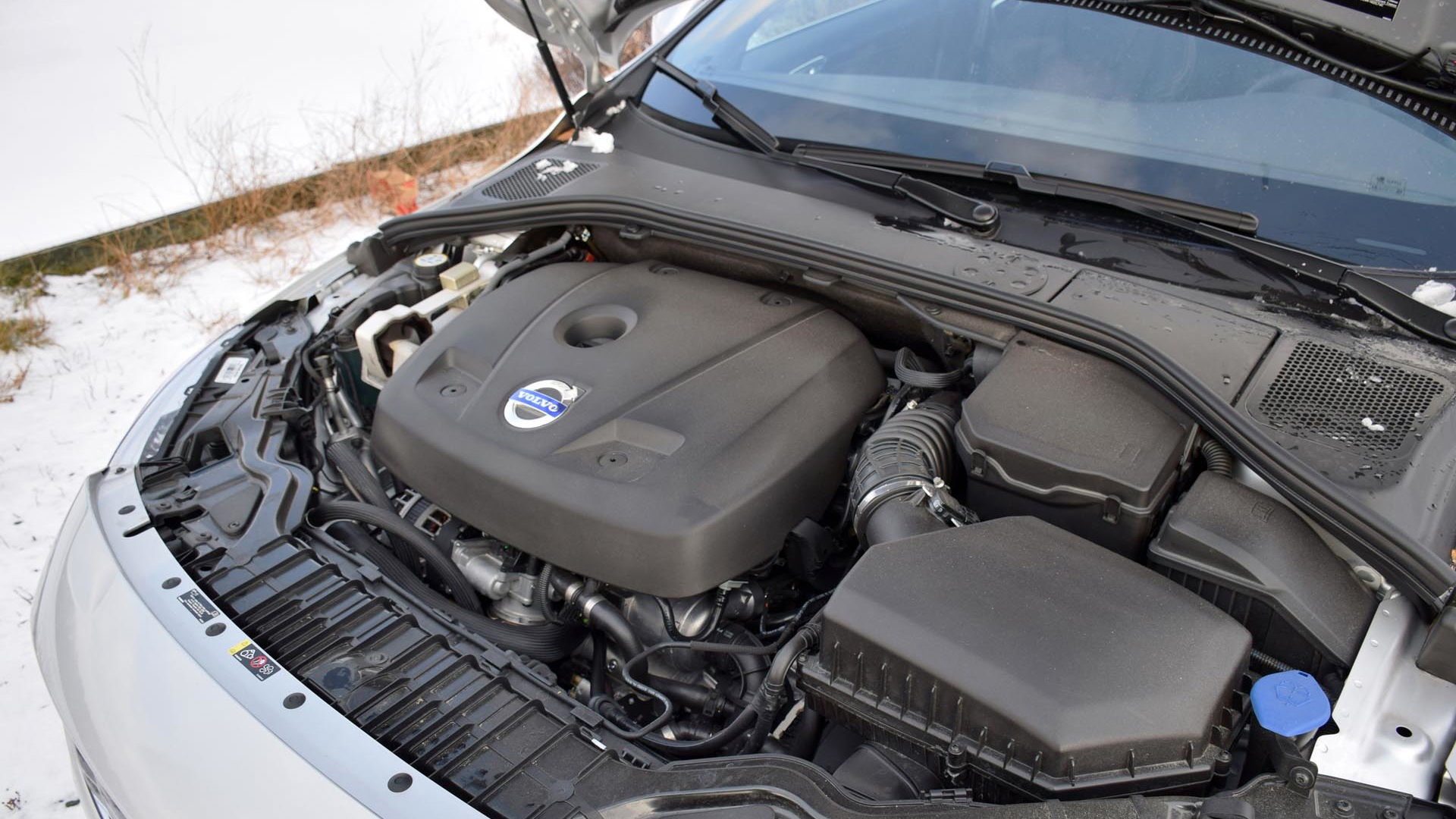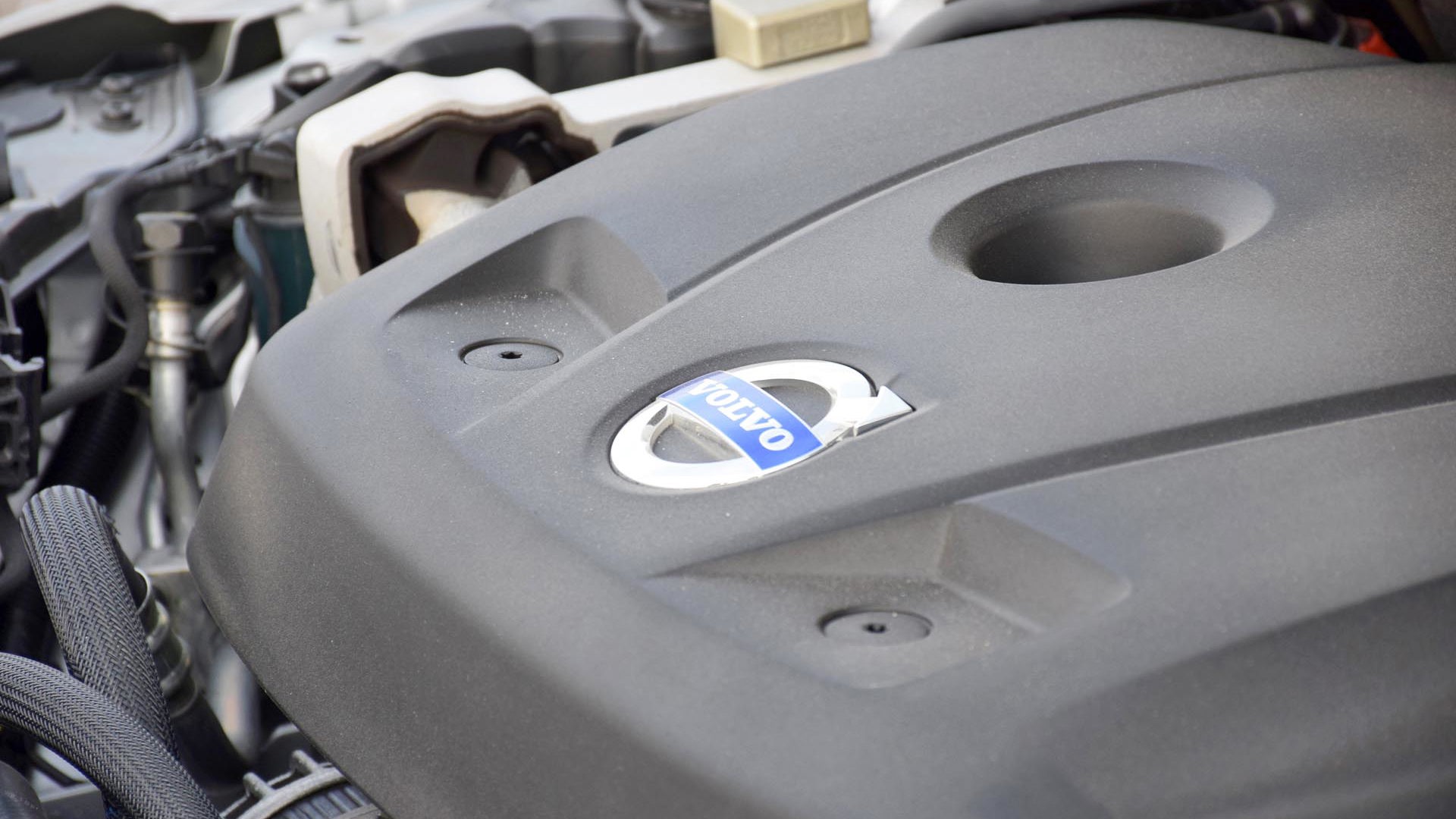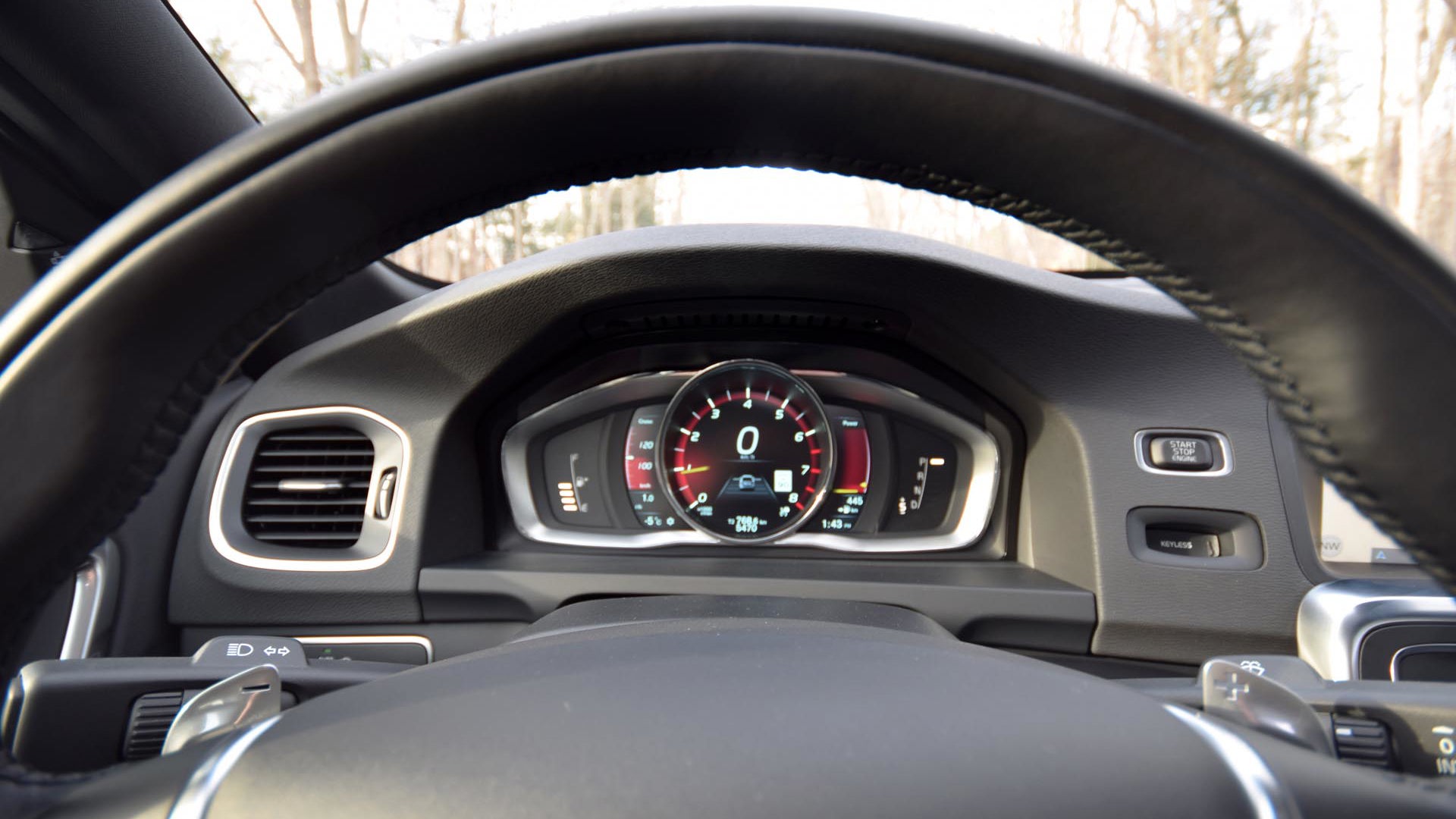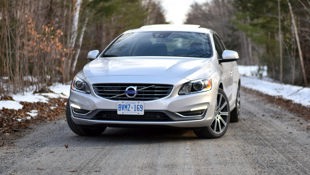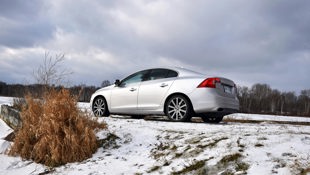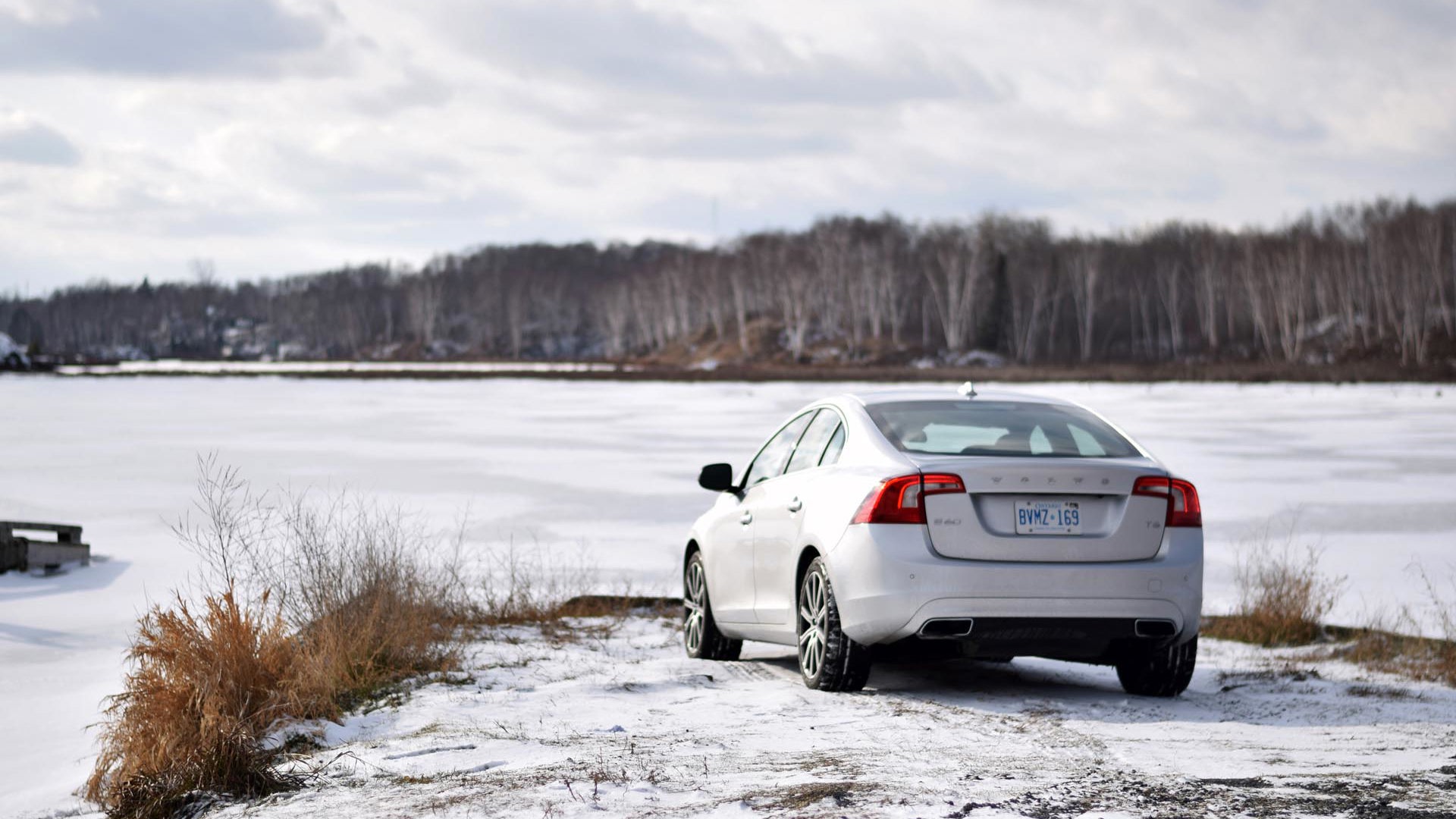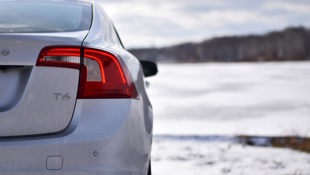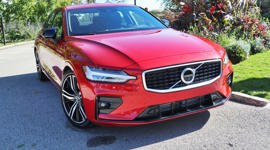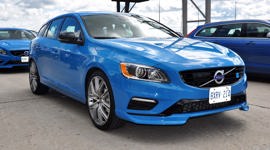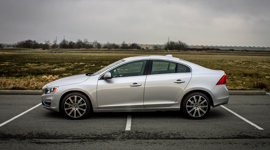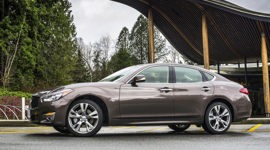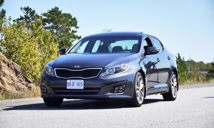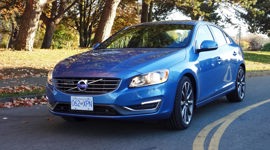 AutoTrader SCORE
AutoTrader SCORE
-
EXTERIOR STYLING8/10
-
INTERIOR8/10
-
PERFORMANCE8/10
-
COMFORT8/10
-
FUEL ECONOMY8/10
The following are five reasons why your writer thinks the Volvo S60 is a hell of a luxury sedan for Canadian drivers:
The Volvo S60 is a hell of a luxury sedan for Canadian drivers
1) It has the most comfortable seats you’ll sit in, in the course of your day.
2) It has a truly unique and upscale cabin that’s not lined in gawdy chrome, glitzy trim or simulated wood grain like your Grandmother’s LeSabre.
3) It feels solid, dense and well-built throughout—right down to the action of the door handles, turn-signal lever and buttons and knobs on the dash.
4) It’s engineered in Sweden, where people go cross-country skiing at lunch and love being outside and active in lousy winter weather. This shows in many areas, including the expertly-tuned stability control and anti-lock braking systems which are highly effective at extracting traction from virtually any surface.
5) It’s a jeans and a T-Shirt sort of luxury sedan that flies under the radar and won’t likely make your fellow motorists wonder if you’re involved in pharmaceutical redistribution, or if you own a collection of designer man-purses.
I have spent many kilometres together with the S60 in its various forms, on the highway, on the racetrack and, more than both of those, in winter.
From a quick drive in the snow, you can feel Volvo’s efforts to make the S60 a confident performer in all situations, including snow days. Impressive slippery-surface braking, a locked-on steering feel, and potent, steerable xenon lights with washers help keep drivers moving around with peace of mind, no matter the weather. There’s a fast-acting traction control system, expertly tuned stability control system, and powerful ABS brakes, all of which work to prevent the S60 from whacking a piece of highway infrastructure when the going gets greasy. These systems are networked to make the best use of available traction, enhanced on all of my winter test drives by winter tires.
There’s an updated S60 on sale now for model year 2015, along with its station wagon brother, the V60. There’s a new bumper. A new instrument cluster. Some new materials in the cabin. It’s still instantly an S60, functionally, dynamically and cosmetically. This is a good thing.
But the big news this year is under the hood. Volvo’s phasing in a remarkable new-generation four-cylinder engine, and soon, some version of it will power just about every machine they make.
Rewind 15 or 20 years. If you wanted 300 horsepower, you needed a V8 engine with eight big, thirsty cylinders to fuel all the time, whether you were using them or not. Not long after, turbocharged or supercharged six-cylinder engines started becoming the go-to way to deliver that sort of output. Drive hard, and the turbochargers boosted engine output. Drive gently, and you were only filling six cylinders, not eight of ‘em. By offloading some of the power output to a turbocharging system, drivers (theoretically) use less fuel, more of the time, with the same available performance at full throttle.
So, eight-cylinder V8 output gave way to six-cylinder V8 output, and it stands to reason that four-cylinder engines with V8 output would be next.
That’s what’s going on, here.
At a glance, Volvo’s new Drive-E engine has two litres, four cylinders and, curiously, one turbocharger and one supercharger.
Both? Yuppers.
Turbochargers and superchargers are both just air compressors, and they do the same thing, but in different ways. The supercharger is an air compressor driven by a belt attached to the engine, so it’s always spinning and kicks up a power boost right from idle. The turbocharger is an air compressor driven by the engine’s exhaust gases, so it needs a few revs to utilize exhaust flow from the engine to get it spinning up to speed before it gets working hard.
Here you’ve got the supercharger to kick up engine power at very low revs, and the turbocharger to keep things steaming along after that. The advantages of one system fill in for the disadvantages of the other to make 306 horsepower from this T6 engine. A less-potent T5 version of it is available now, too. More will follow.
Since this new engine is tiny, when you’re cruising the highway or driving gently, you’re fueling four little cylinders. Give it a stomp, and the compressors kick into action creating rich, unrelenting forward thrust, and lots of it, with no surging, no lagging and no waiting. It hauls serious derriere, right now, whenever called upon. In typical Volvo fashion, this happens with minimal noise, a graceful and rapid consumption of the road ahead, and a sense that the engine is never strained or working very hard at all.
It’s also remarkable when driven gently. Since the supercharger is always spinning, low-end torque, even right off of idle, is plentiful. If you’re not a sporty driver, that low-end power means the S60 can operate at minimal revs, with minimal strain, and use even less fuel. Here’s an engine that’s as happy at full throttle as it is being driven very, very gently.
And though your writer missed the semi-exotic wail of the S60’s old turbocharged straight-six engine (you can still order it, for now, in some model variants), the occasional whine, whistle and hiss of the air compressors, especially when the new engine is cold, sounds pretty neato, too. Don’t miss the sound of the supercharger engaging, and then cutting off as the turbo becomes fully spooled. In all, the new big-boost four-banger is quieter, more refined and more flexible a powerplant than the unit it replaces.
It’s also easier on fuel. Past test drives of S60 variants with the old turbo straight-six saw mileage land just above 12 L/100 km, for where and how I drive. The new unit turned in a figure of just 10 L/100 km. So, the technology works.
Mind you, part of that fuel economy improvement can be attributed to the tester’s front-wheel-drive setup. At the time of writing, AWD wasn’t quite yet available paired to this new engine in the S60, though it was fitted to the six-cylinder testers whose mileage I recorded. Driving two wheels, not four, saves a bit of fuel.
The improved economy isn’t just to the engine’s credit, either. There’s a new eight-speed automatic that allows coasting in neutral to save fuel, and auto-stop functionality to virtually eliminate wasteful idling. In the S60’s case, the system restarts the engine fast, and with little more than a slight squirm felt through the floor. It’s generally smooth and unintrusive.
Driving two front wheels with 306 on-demand horsepower also generates torque steer, which sees the steering wheel squirm about in your hands at full throttle—though it’s managed well here and never became anything more than a reason to have two hands firmly on the wheel during my test drive.
Elsewhere, key loveable S60 traits remain unchanged. When it’s cold and miserable and windy outside, the front and rear heated seats take away the chill, as does the heated steering wheel. The standard audio system is punchy, the waterfall console adds a slick design touch that facilitates more storage for your things, and the fully customizable instrument cluster can be set into various display themes, called into action depending on what you’re planning on getting up to. I like the performance theme because it’s red, and puts the tachometer right in the middle.
Of course, performance is just one aspect of this machine. Safety is another. You get a full array of radar and laser and camera-based hazard detection systems that can warn you if you’re about to run someone over, leave your lane unintentionally, rear-end another car, smack something while parking or even if you’re too sleepy to drive. The radar guided cruise control, which auto-regulates the S60’s speed based on traffic, is among the smartest and smoothest I’ve ever used, too.
So, all the safety stuff, heaps of power, and mileage as good as I’ve ever seen in a 300-hp car, which means drivers will spend less time in the lineup at the gas station behind elderly lottery ladies. Sounds pretty win-win, yes?
Complaints were minimal. The tester rode the touring-calibrated chassis, which is a bit too soft for the quick steering setup, meaning that sometimes, when you steer at speed, it feels like you’re startling the car, a little. The navigation system is getting a bit old, and the S60 is adequately sized, not huge, so bigger drivers might feel a little crampy. Also, you might expect a bit less wind noise from your new luxury sedan.
End of the day, if your priorities in an understated luxury sedan include top-notch safety, winter driving confidence and a hefty performance punch with a not-so-hefty fuel bill, be sure to check out the Volvo S60 Drive-E.
| Warranty: 4 years/80,000 km; 4 years/80,000 km powertrain; 12 years/unlimited distance corrosion perforation; 4 years/unlimited distance 24-hour roadside assistance Competitors: |
| Model Tested | 2015 Volvo S60 Drive-E Platinum |
|---|---|
| Base Price | $47,100 |
| A/C Tax | $100 |
| Destination Fee | $1,195 |
| Price as Tested | $53,245 |
|
Optional Equipment
Climate Package ($1,350), Technology Package ($1,500), BLIS ($1,000), Active Xenon Headlamps with Washers ($1,000)
|
|
